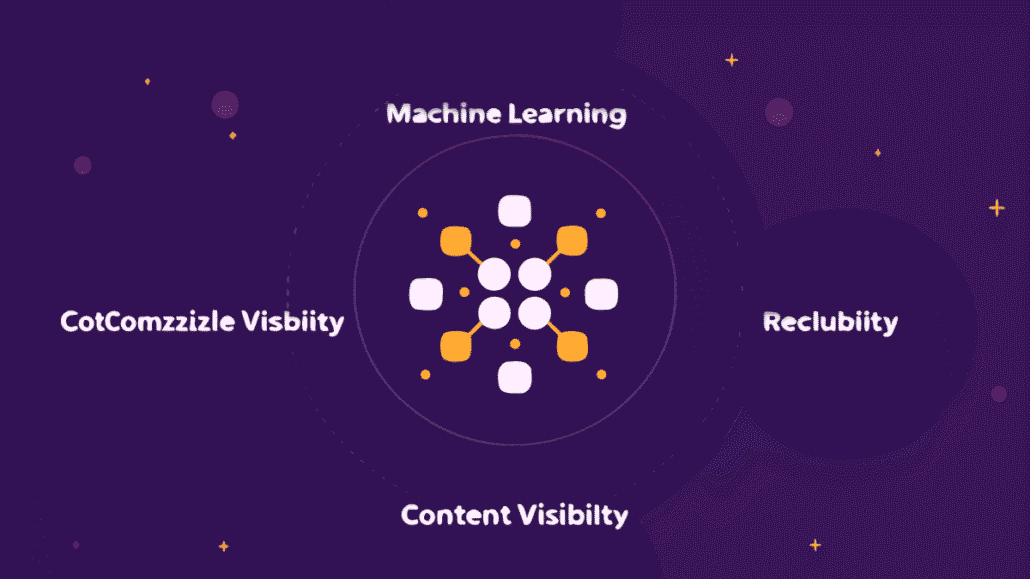
Search engine optimization has changed a lot in the past ten years. The old trick of packing a page with keywords to climb the rankings simply doesn t work anymore. Now, machine learning guides the way search engines read and score content, opening up fresh chances-and some tough hurdles-for SEO pros.
Machine Learning SEO algorithms
This shift is more than a new line of code. It changes how search engines figure out what a user really means, judge how good a piece of content is, and show the best answers. Anyone who wants to keep or boost their rankings needs to get these ideas quickly.
What Are Machine-Learning SEO Algorithms?
Machine-learning SEO algorithms are smart systems that use AI to sort and rank web pages. Instead of sticking to a fixed set of rules, these models learn from massive data so they can guess better what people want to see.
While older models followed step-by-step logic, todays engines scan nearly every signal at once. They look at loading speed, mobile fit, content length, click rates, bounce rates, and tons of hidden factors too. Because they spot patterns a human coder might miss, these systems can draw deeper links between signals and search success.
The Shift from Hard Rules to Smart Learning in Search
Back in the day, SEO followed a set of clear rules. If you sprinkled a keyword enough times, your page climbed higher. Add a certain amount of backlinks, and boom, you gained authority. Those systems were easy to predict, but they were also pretty shallow.
Machine-learning tools now learn on their own. They scan millions of searches and see what real people click, read, and share. By spotting tiny patterns in how users move, how a headline looks, or what words appear in context, they do stuff old rules never could.
Machine Learning Milestones That Shook Up SEO
Over the years, big updates have pushed machine learning deeper into ranking. Each fresh roll-out has nudged the old rulebook aside and added more learning power.
RankBrain: A Fresh Mind for Search
RankBrain arrived in 2015 as Googles first big leap into machine learning. Instead of relying only on exact keywords, this engine reads the meaning behind a query especially the strange or new ones. It connects chatty, human searches with helpful pages even when those pages lack the exact words users typed.
RankBrain, BERT, and MUM: Google ’ s Evolving Intelligence
RankBrain: Smarter Synonyms
RankBrain goes well beyond figuring out what words show up in a search box. It helps Google untangle synonyms, recognize context, and read the deeper intent of the person doing the searching. So when someone types “best pizza place,” the results might slip in links for “top pizzeria” or “favorite Italian restaurant” because RankBrain knows those phrases are basically the same.
BERT: Understanding Natural Language
BERT-which stands for Bidirectional Encoder Representations from Transformers-changed the game for natural language processing the moment it went live in 2019. By looking at sentences both left-to-right and right-to-left, the model picks up tiny clues like prepositions, tone, and word-to-word relationships that matter in everyday conversation.
Because of BERT, Google now favors longer, more chatty questions over pages that slam in the same keyword the old way. Pages that read naturally and answer questions head-on tend to climb higher, while keyword stuffing sinks lower. This shift pushed writers to be truly helpful instead of hunting for loopholes.
MUM: Multimodal Understanding
The newest player, MUM, short for Multitask Unified Model, takes things even further by working across text, images, audio, and video at the same time. It handles dozens of languages in one pass, which means it can string together an answer for a tricky question without needing to chase each format separately.
Because of MUM, savvy SEOs now have to think about videos, charts, and infographics as part of their keyword plan. A well-optimized article paired with sharp photos and a short explainer clip might outrank a flawless text-only page simply because MUM can pull all that material together.
How Machine Learning Algorithms Evaluate Content
Machine learning algorithms examine online content in several smart ways that stretch well beyond old keyword filters.
Natural Language Processing
One major tool is natural language processing, or NLP. With NLP, a search engine looks at how sentences are built, spots names or dates, and weighs whether the text really stays on topic. Because of that, a page needs to be clear, accurate, and genuinely helpful if it wants to climb the rankings.
The system can also tell if writing feels human and smooth, or if every phrase was forced in for the sake of code. For this reason, material that shows true know-how and covers a question from start to finish gets extra credit.
User Experience Signals
User experience signals matter just as much, perhaps more. When people click a link, scroll a bit, and then leave-or stay for several minutes-the algorithm notices and adjusts scores accordingly. Pages that answer questions fast, guide visitors gently, and keep them curious usually soar higher.
Common clues include click-through rate, time on each page, bounce rate, and how often users return. Still, the code is clever enough to read context. A quick how-to snippet may bounce visitors almost instantly but remain on top when it nailed the answer.
Semantic Understanding
Today’s search engines scan for meaning, not just individual words. They can tell when an article treats a topic in-depth, even if it misses a few expected phrases.
Because of this, well-researched writing naturally uses related ideas and synonyms. Search engines now reward that broad coverage instead of punishing a site for quoting one keyword too rarely.
The Impact on Traditional SEO Strategies
Machine learning has shaken up the SEO playbook, so marketers need to rethink old tricks and try new moves.
Keyword Strategy Evolution
Keywords still matter, but how you use them has changed. Instead of chasing an exact term, smart SEO means studying user intent and building pages that cover every question around it.
Long-tail phrases shine now that algorithms read everyday speech better. Answers to narrow queries or direct fixes to a problem usually rank higher than one-size-fits-all content.
Content Quality Requirements
The standard for online writing is tougher than ever. Deep-learning filters spot thin, copied, or over-stuffed text with ease. They lift up pages that show real expertise, clear authority, and genuine trust.
More than ever, depth and originality matter in online articles. Quick, surface-level posts that skim a topic no longer rank well beside detailed guides that truly help readers.
A New Face for Link Building
The way links are built has changed, too. Modern machines sniff out toxic backlinks. Old tricks now carry risks and may even hurt a site.
Today, smart link-building comes from sharing useful content and forming real connections. A few links from respected, on-topic sites count far more than hundreds from low-quality pages.
Optimizing for Machine Learning Algorithms
To win in a machine-learning world, the goal should shift from cracking codes to creating true value.
Put User Intent First
At the heart of strong SEO is knowing what users want and why they want it. Research must look past the words people type and ask what goal they hope to reach.
Content should answer those goals up front and offer clear, doable steps. Pages that explain quickly usually outshine those that make readers scan for the good parts.
Create Comprehensive Content
Machine-learning systems today favor articles that explore a subject from every useful angle. That doesnt automatically mean a word count ballooning; it means answering every question real readers are likely to ask.
When content is rounded, it naturally pulls in related keywords and phrases, matching the algorithms growing emphasis on semantic meaning. Such thorough pieces also earn more backlinks and keep visitors clicking around longer.
Optimize for Featured Snippets
With mobile devices and voice assistants everywhere, featured snippets are harder to ignore. Algorithms pick snippet text based on the clearest, most straightforward answer to a users vocal or typed query.
By using headings, lists, and short-answer boxes throughout the page, writers boost their chances of landing that real-estate. Even if the main URL doesnt snag first place, that single box can still swing a serious stream of visitors.
Improve Technical Performance
Great words alone wont lift a site if pages crawl or jitters on small screens. Modern ranking brains weigh speed, mobile fit, and the overall ease of use alongside content quality.
Thats why Core Web Vitals matter; they are official criteria every publisher must heed. Sites that load in a heartbeat and glide smoothly through taps gain favor both with the algorithm and with grateful users.
Measuring Success in the Machine-Learning Era
Most webmasters still check the usual numbers-lite clicks, impressions, and, yes, rankings naked but the rise of AI tools means those numbers tell part of a bigger story.
Beyond Rankings
Rank position matters, but a top spot may hide poor click-through rates or barely moving traffic when results are shaped by user profiles. Shift your lens to total organic sessions, conversion rates, and share of voice across SERPs. Also watch brand mentions, direct visits, and engagement numbers-like scroll depth and repeat visits-because they reveal whether SEO is genuinely moving the needle on revenue and reputation.
User-Centric Metrics
Search is a popularity contest, and machines now judge popularity partly by user delight. Keep a close eye on time spent on page, pages each visit, and return rates; if those figures rise, your content is helping users and feeding the algorithm. Frustrated visitors click, back, and vanish, which shows up as a high bounce rate and, over time, as lower visibility.
Preparing for the Future of SEO
No crystal ball will ever guarantee immunity from sudden ranking shake-ups, but an adaptable mindset cushions the blow.
Embrace Continuous Learning
Guidelines and case studies age faster than a viral trend, so read blog updates, join webinars, and run small tests on every change you hear about. Data is your compass, but curiosity fuels the journey.
Learn the New Tools
Voice search, visual search, and AI content aren t just cool tech trends they are tools every SEO should know. Each one adds fresh chances to reach customers, but each also brings a unique headache.
Stick with the Basics
Trendy tactics come and go, yet the heart of good SEO never changes: write content people find useful. Companies that truly help their audience tend to ride algorithm shifts with far less drama.
This user-first habit matches where machine learning is headed, so it stays smart for the long haul.
Winning in the Smart Search Era
Yes, machine-learning algorithms make SEO trickier, yet they also hand out bigger rewards for those who play by the new rules. Today s bots praise pages that meet real human needs, which means a better web for everyone.
Real success calls for less tinkering with code and more time listening to what users actually want. That move may look scary, but it builds lasting, powerful SEO over time.
Firms that see machine learning as a partner, not a roadblock, will craft richer stories and smoother journeys. By syncing their goals with the algorithm s, they strengthen audience bonds and climb search rankings.






